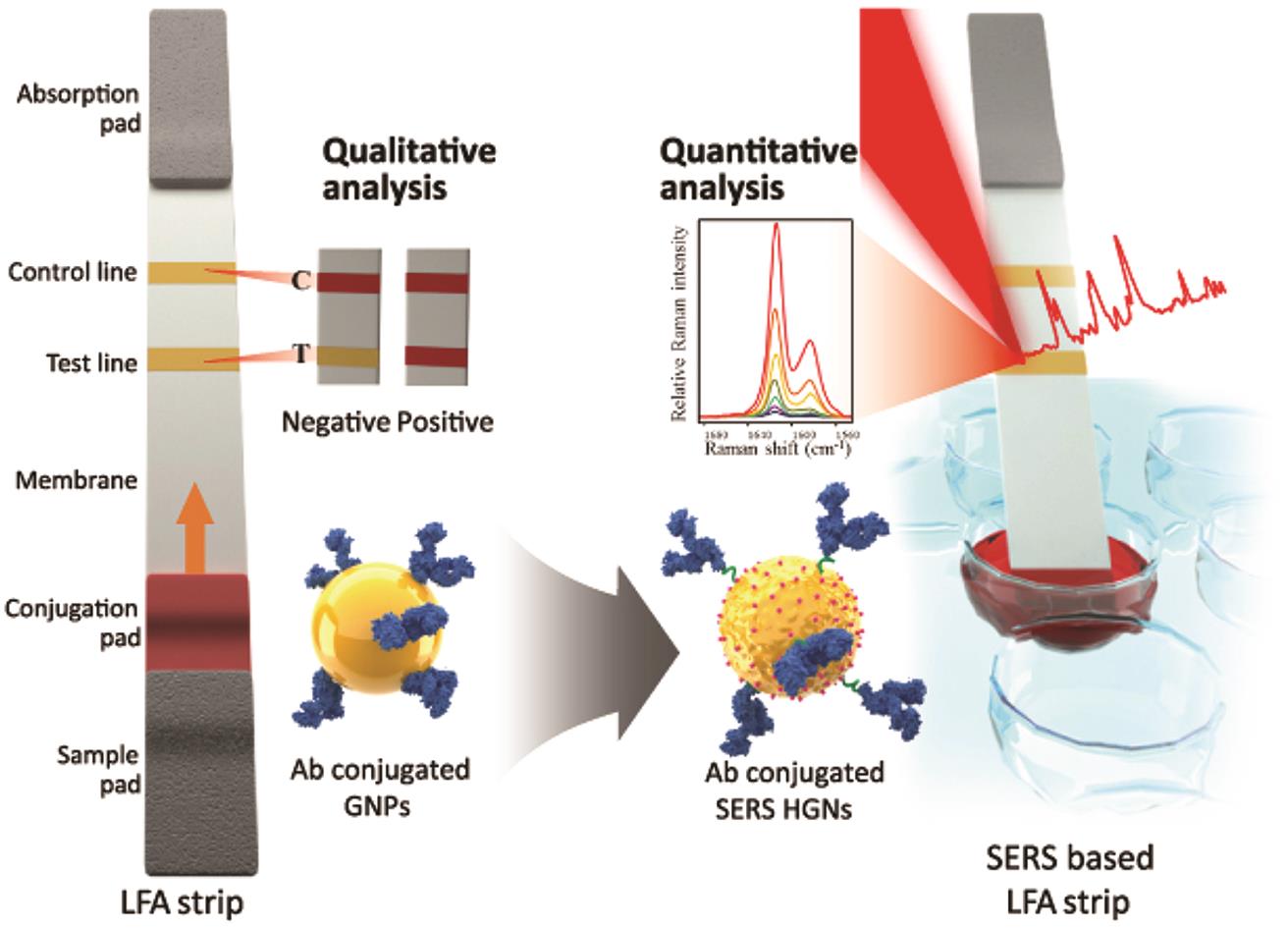
Lateral flow assays (LFA) have become a promising tool in the diagnostics market in recent years due to their low cost, ease of use and short assay times. The simplicity of their use extends to the inclusion of, typically, gold nanoparticle labels that provide a visual confirmation, due to their distinctive red colour, of a particular target analyte. However, limitations, such as quantitative analysis and assay sensitivity, can hinder their broader use in diagnostics.
To overcome these limitations, researchers from South Korea have utilised surface enhanced Raman scattering (SERS) to detect staphylococcal enterotoxin B (SEB) on a LFA strip. The authors have opted to use Raman reporter-labelled hollow gold nanospheres (HGNs) instead of the conventional gold nanoparticle labels. Using HGNs, the authors were able to detect as low as 0.001 ng/mL of SEB, which is about three orders of magnitude more sensitive than the conventional ELISA-based method for SEB.
These researchers demonstrates that SERS can be utilised to overcome the limitations of conventional LFAs in order to achieve greater assay sensitivity without deviating from the original LFA design.
Application of a SERS-based lateral flow immunoassay strip for the rapid and sensitive detection of staphylococcal enterotoxin B
Joonki Hwang, Sangyeop Lee and Jaebum Choo
Nanoscale, 2016, DOI: 10.1039/C5NR07243C
Dr Lee Barrett is a guest web writer for the Nanoscale blog. Lee is currently a postdoctoral researcher in the Centre for Molecular Nanometrology at the University of Strathclyde. His research is currently focused on the development of nanoparticle-based sensors and surface enhanced Raman scattering (SERS). Follow him on twitter @L_Bargie










